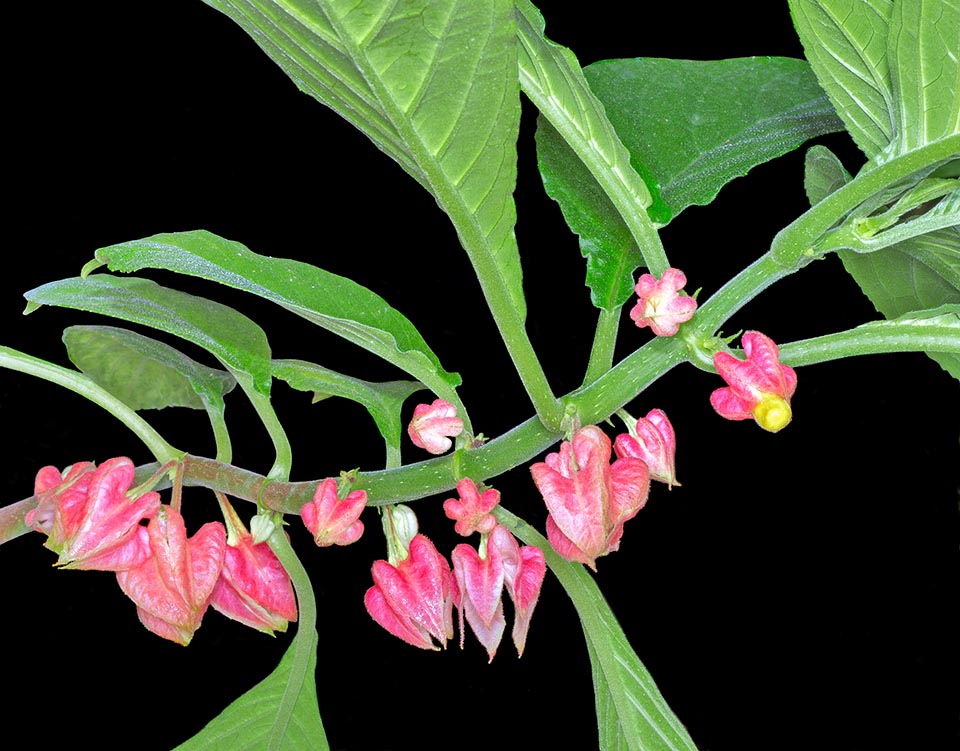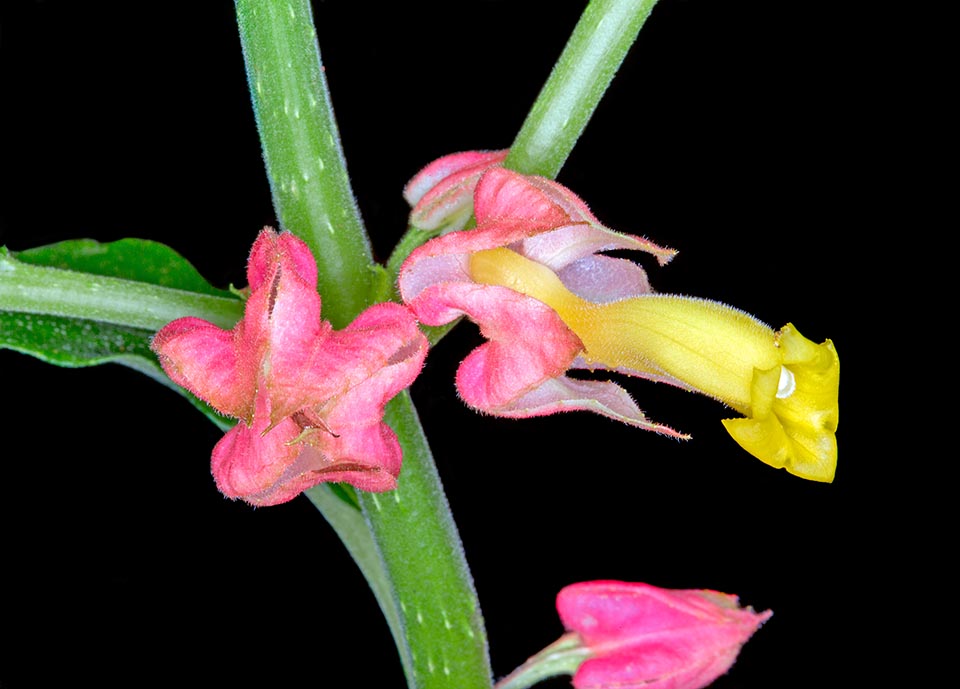Family : Gesneriaceae

Text © Pietro Puccio

English translation by Mario Beltramini
The species is native to Mexico (Chiapas, Guerrero, Oaxaca e Veracruz) where it lives in the moist forests between the 150 and 2700 m of altitude.
The name of the genus comes from the Greek “δρυμόνιος” (drymónios) = living in the forests; the name of the species is the Latin adjective “strigosus, a, um” = thin, gaunt, but in the botanical Latin gets the meaning of equipped with rigid hair, short and thick hairs.
The Drymonia strigosa (Oerst.) Wiehler (1972) is an evergreen suffruticose species with fleshy stems, brown-greyish, initially tomentose, then glabrous, 1,5-2 m long.
The leaves, on a 2,5-4 cm long petiole, are simple, opposite, oblong-elliptic with acuminate apex and slightly serrate margin, of variable dimensions, the biggest ones 20-23 cm long and 10-12 cm broad. Solitary floral peduncle at the axil of the leaves, pubescent, pentangular; winged and enlarged towards the apex, 1,2-1,7 cm long.

The Drymonia strigosa is an evergreen suffruticose species little cultivated, native to Mexico, with stems that can be 2 m long © Giuseppe Mazza
Calyx, 2-2,5 cm long, with 5 ovate-cordate lobes having acuminate apex and slightly toothed margins, pubescent, pale pink to intense pink, persistent. Tubulose corolla slightly sigmoid, 4-5 cm long and of 1,5 cm of diameter, of yellow colour with 5 lobes with rounded and retroflexed apex, 4 didynamous stamens (two longer and two shorter) inside the tube and superior ovary. The fruit is an oblong fleshy capsule with persistent calyx containing numerous tiny seeds.
It reproduces by seed, placed superficially in aerated and draining organic loam maintained humid at the temperature of 24-26 °C, by division of tufted plants, and by cutting, in spring-early summer.
Species little present in cultivation due to the difficulty of creating the optimal conditions for its growth and for the size it may reach that require fairly amply spaces, unless proceeding to periodic pruning.

The yellow flowers, 4-5 cm long, with more or less intense pink calyx, rise solitary on short peduncles at the axil of the leaves © Giuseppe Mazza
In open air, in the tropical and humid subtropical climate regions, requires a shady position sheltered from the winds and substrata rich of organic substance, aerated and draining, acidic or neutral, maintained constantly humid. Elsewhere, it is to be kept in pots or baskets, even suspended, in order to be sheltered during the coldest months in a protected environment with high environmental humidity, 70-80 % and averagely high temperatures with lowest night ones not under the 15 °C. Abundant watering during the vegetative period, but without stagnations, being easily subject to root rottenness, alternated, in way to allow the substratum to partially dry up, spaced in winter, but without making it completely dry, utilizing non calcareous water at room temperature. Fertilizations in spring-summer utilizing a hydrosoluble product with microelements for flowered plants in pot, with the modalities shown on the package.
Synonyms: Saccoplectus strigosus Oerst. (1858); Alloplectus strigosus (Oerst.) Hanst. (1866); Columnea hansteiniana Kuntze (1891); Crantzia strigosa (Oerst.) Fritsch (1894).
→ To appreciate the biodiversity within the GESNERIACEAE family please click here.
